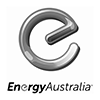ALL YOU NEED TO KNOW ABOUT PLASTIC AND POLY WELDING
Read our useful information below on industry standard poly welding methods. Providing an overview on plastic welding best practice and application according to plastic properties, project needs and intended use. Once you’ve identified a poly welding method, browse our project experience >>>
PLASTIC WELDING / POLY WELDING
Plastic Welding or Poly Welding for semi-finished plastic materials is described as a process of uniting softened surfaces of materials, generally with the aid of heat (except solvent welding). Welding of thermoplastics is accomplished in three sequential stages, namely surface preparation, application of heat and pressure, and cooling. Numerous welding methods have been developed for the joining of semi-finished plastic materials. Based on the way of heat generation mechanism at the welding interface, welding methods for thermoplastics can be classified as external and internal heating methods.
EXTERNAL METHODS / THERMAL
HOT GAS OR HOT AIR WELDING
Hot Gas Welding (HGW), also known as Hot Air Welding (HAW), is a plastic welding technique using heat. A specially designed heat gun, called a hot air welder, produces a jet of hot air that softens both the parts to be joined and a plastic filler rod, all of which must be of the same or a very similar plastic. (Welding PVC to acrylic is an exception to this rule.) Hot air/gas welding is a common fabrication technique for manufacturing smaller items such as chemical tanks, water tanks, heat exchangers, and plumbing fittings. In the case of webs and films a filler rod may not be used. Two sheets of plastic are heated via a hot gas (or a heating element) and then rolled together. This is a quick welding process and can be performed continuously.
EXTRUSION WELDING
Extrusion Welding (EW) allows the application of bigger welds in a single weld pass. It is the preferred technique for joining material over 6mm thick. Welding rod is drawn into a miniature hand held plastic extruder, plasticised, and forced out of the extruder against the parts being joined, which are softened with a jet of hot air to allow bonding to take place.
HOT PLATE WELDING OR BUTT WELDING
Hot Plate Welding (HPW), is used to weld larger parts, or parts that have a complex weld joint geometry. The two parts to be welded are placed in the tooling attached to the two opposing platens of a press. A hot plate, with a shape that matches the weld joint geometry of the parts to be welded, is moved in position between the two parts. The two opposing platens move the parts into contact with the hot plate until the heat softens the interfaces to the melting point of the plastic. When this condition is achieved the hot plate is removed, and the parts are pressed together and held until the weld joint cools and re-solidifies to create a permanent bond. The most common form of this welding is butt (heat fusion) welding which welds two circular tubes end to end.
BUTT HEAT FUSION WELDING / BUTT WELDING
Butt (Heat Fusion) Welding, Heat Fusion (sometimes called Heat welding or Fusion) is a welding process used to join two different pieces of a thermoplastic. This process involves heating both pieces simultaneously and pressing them together. The two pieces then cool together and form a permanent bond. When done properly, the two pieces become indistinguishable from each other. Dissimilar plastics can result in improper bonding. This process is commonly used in plastic pressure pipe systems to join a pipe and fitting together, or to join a length of pipe directly to another length of pipe. Generally, polyolefins (such as polypropylene, polyethylene, and polybutylene) are used for these applications. Butt welding is usually performed using one of several methods. The first, and most common, is butt welding or butt fusion, which is a type of hot plate welding. This technique involves heating two planed surfaces of thermoplastic material (typically polyethylene) against a heated surface. After a specified amount of time, the heating plate is removed and the two pieces are pressed together and allowed to cool under pressure, forming the desired bond. Butt welding outside of manufacturing is usually performed to join pipes.The other major technique is socket fusion. It is distinguished from butt-welding by using custom-shaped and sized heating plates rather than a basic flat surface. These heads allow for more surface contact, reducing the time needed to heat and fuse the pipe. Socket fusion joins pipe and fittings together, rather than simply joining pipe to pipe. It requires less pressure than butt-welding and is more commonly used on smaller sizes of pipe (100mm or less). Socket welding has additional advantages of requiring less machinery and is more portable than the heavier equipment required for butt fusion. A third method of thermoplastic welding is called sidewall fusion, or saddle fusion. Sidewall fusion is, like butt fusion and socket fusion, another process based on hot plate welding. Sidewall fusion differs from either socket, or butt fusion methods by performing fusion into the side of the pipe wall in a transverse orientation to the main pipe, rather than in line with the pipe. Sidewall fusion is typically employed in conjunction with either socket or butt fusion methods as a complementary process and many fusion machines designed for butt fusion are also equipped for sidewall fusion. Adaptor plates that match the outside diameter of the main pipe are applied to the heating plate to perform this type of fusion.
INTERNAL METHODS / ELECTROMAGNETIC
ELECTROFUSION WELDING
Electrofusion is a method of joining HDPE and other plastic pipes with special fittings that have built-in resistive wire which is used to weld the joint together. The pipes to be joined are trimmed, cleaned, inserted into the electrofusion fitting (with a temporary clamp if required) and a voltage (typically 40V) is applied using a device called an electrofusion processor. The processor controls how much voltage is applied, and for how long, depending on the fitting in use. As current is applied to the resistive wire, the coils heat up and melt the inside of the fitting and the outside of the pipe wall which weld together producing a very strong homogeneous joint. The assembly is then left to cool for a specified time. The joints produced tend to be more reliable than threaded fittings sealed with O-rings.
ELECTRIC RESISTANCE WELDING
Electric Resistance Welding (ERW) refers to a group of welding processes such as spot and seam welding that produce coalescence of faying surface heat to form the weld. The weld is generated by the electrical resistance of material combined with the time and the force used to hold the materials together during welding. Some factors influencing heat or welding temperatures are the proportions of the workpieces, the metal coating or the lack of coating, the electrode materials, electrode geometry, electrode pressing force, electrical current and length of welding time. Small pools of molten metal are formed at the point of most electrical resistance (the connecting or “faying” surfaces) as an electrical current (100–100,000 A) is passed through the metal. In general, resistance welding methods are efficient and cause little pollution, but their applications are limited to relatively thin materials and the equipment cost can be high (although in production situations the cost per weld may be low).























